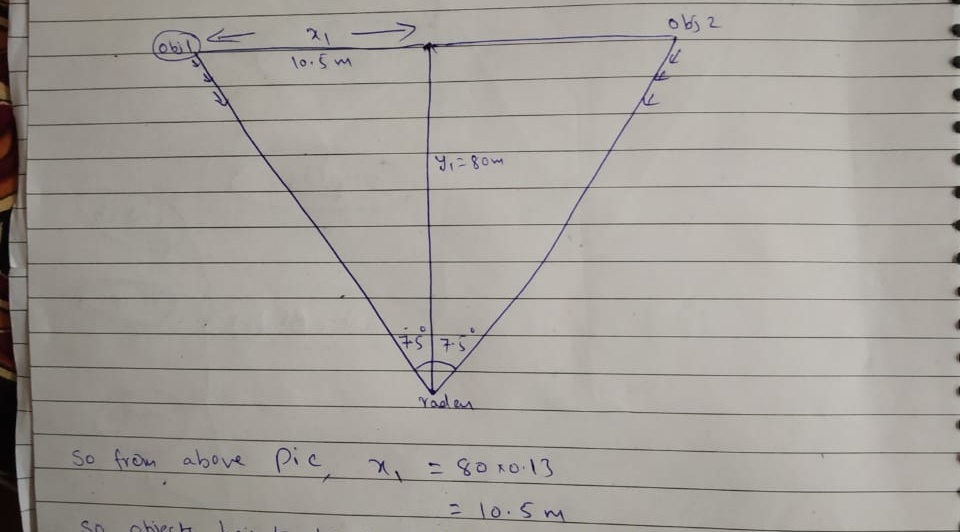Other Parts Discussed in Thread: AWR1642
We are using AWR1642 in SRR/USRR mode
We understand from other queries and documents that objects will be resolved in angle FFT , if there at the same range and with same velocity . From AWR1642 specification we understand that angle resolution is 15 degrees in SRR/USRR mode .
From the pic x1= 80*tan(7.5) which comes to 10.5 m
So objects have to be separated by atleast 21 m at 80 m distance to show as two separate trackers ? let us know if our understanding is correct .

